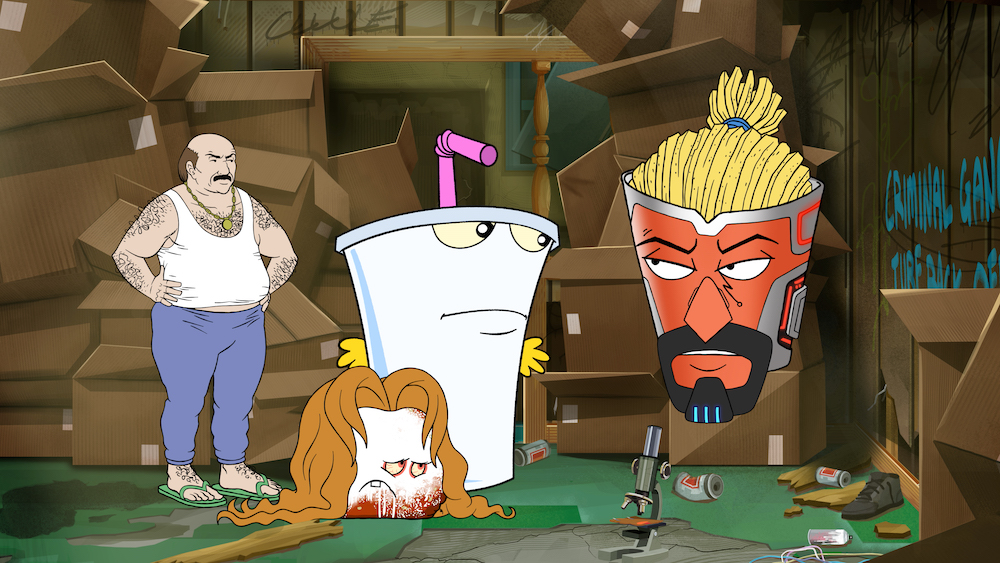Uncategorized
Would Aqua Teen Hunger Force Work Today? Examining Its Legacy in Modern Animation
Aqua Teen Hunger Force, the animated series that first graced television screens in 2000, was an eccentric concoction of absurd humor, surreal plot lines, and memorable characters. The show centered around a trio of anthropomorphic fast food items—Master Shake, Frylock, and Meatwad—who shared a house and engaged in bizarre adventures that ranged from the mundane to the outrageous. Over two decades later, we find ourselves contemplating whether the humor and framework of Aqua Teen Hunger Force would resonate with today’s audience and how it fits within the legacy of modern animation.
The Original Appeal of Aqua Teen Hunger Force
Aqua Teen Hunger Force’s appeal stemmed from its unique approach to storytelling and character development. Unlike traditional animated shows that relied on standard narrative arcs, it thrived on spontaneous humor and unpredictable situations. This unconventional format allowed for a level of creativity and originality that was largely absent in mainstream animation at the time. The show became a cult classic, drawing attention for its willingness to experiment with form and content, often pushing the boundaries of what animated television could convey. However, as the animation landscape has evolved, the question arises: Would this kind of humor translate successfully in today’s climate?
Changes in Audience Expectations
In recent years, the animation industry has shifted dramatically. Audiences, particularly younger viewers, now gravitate toward shows that prioritize inclusivity, character depth, and emotional engagement. Series like Steven Universe and BoJack Horseman have changed the narrative landscape by blending humor with poignant themes surrounding identity, mental health, and personal growth. While Aqua Teen Hunger Force deftly captured a specific moment in pop culture, its randomness and occasionally controversial humor could alienate new viewers who have come to expect a different tone in animated programming.
The Rise of Nostalgia and Merchandising
Despite the changing landscape, there remains a strong current of nostalgia for early 2000s programming. Shows like Aqua Teen Hunger Force continue to find footing through streaming platforms and merchandise, such as the Aqua Teen Hunger Force shop. This outlet offers fans a chance to reconnect with their favorite characters via apparel, collectibles, and various memorabilia. Merchandise serves as a reminder of the show’s impact, bridging the gap between its original airing and the current era. Fans old and new can delight in the nostalgia that the Aqua Teen Hunger Force shop promotes, proving that while the format may need to evolve, the legacy of the characters remains strong.
The Future of Absurdism in Animation
As we look forward, the legacy of Aqua Teen Hunger Force can possibly inform a new wave of absurdist animation tailored to modern sensibilities. Shows that manage to capture the irreverent spirit of Aqua Teen while acknowledging contemporary themes and audience expectations could strike the right balance. Creators may find success in blending satirical takes with poignant commentary, staying true to the madness that originally defined the series while making it relevant for today’s viewers. Aqua Teen Hunger Force remains an important part of the animated canon, and its essence still holds potential for new interpretations and adaptations that embrace both chaos and meaning.
In conclusion, while Aqua Teen Hunger Force may not seamlessly fit into today’s animation landscape due to its unique brand of humor, its legacy is undeniable. The show’s peculiar approach to storytelling has paved the way for creative expression that continues to inspire today’s animators. Ultimately, the spirit of Aqua Teen Hunger Force lives on, not only through streaming services and retro nostalgia via the Aqua Teen Hunger Force shop but also in the continued exploration of absurdity in contemporary animation.

